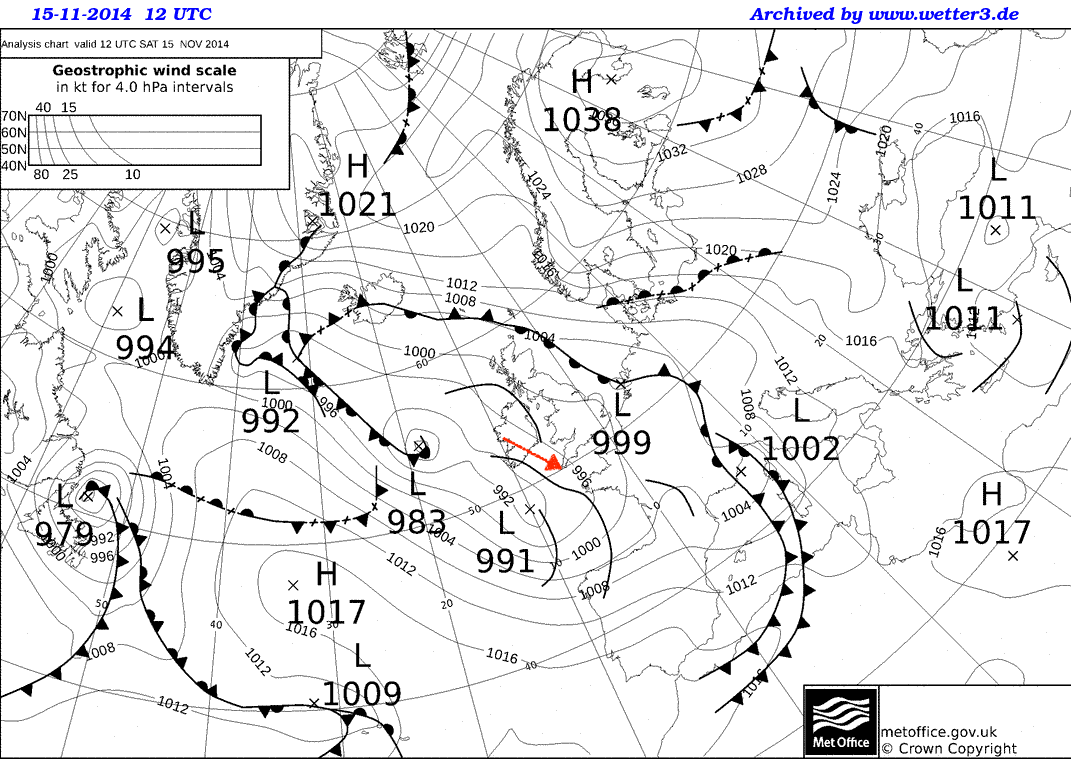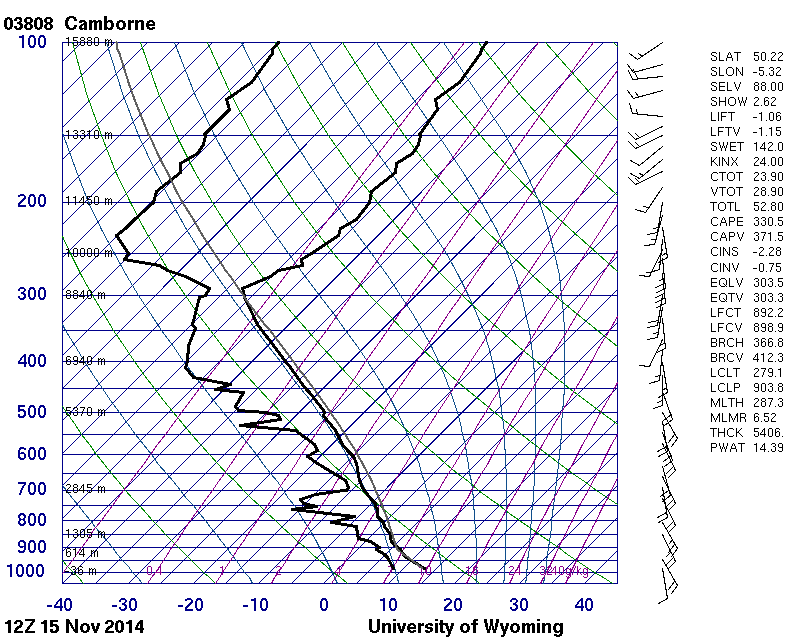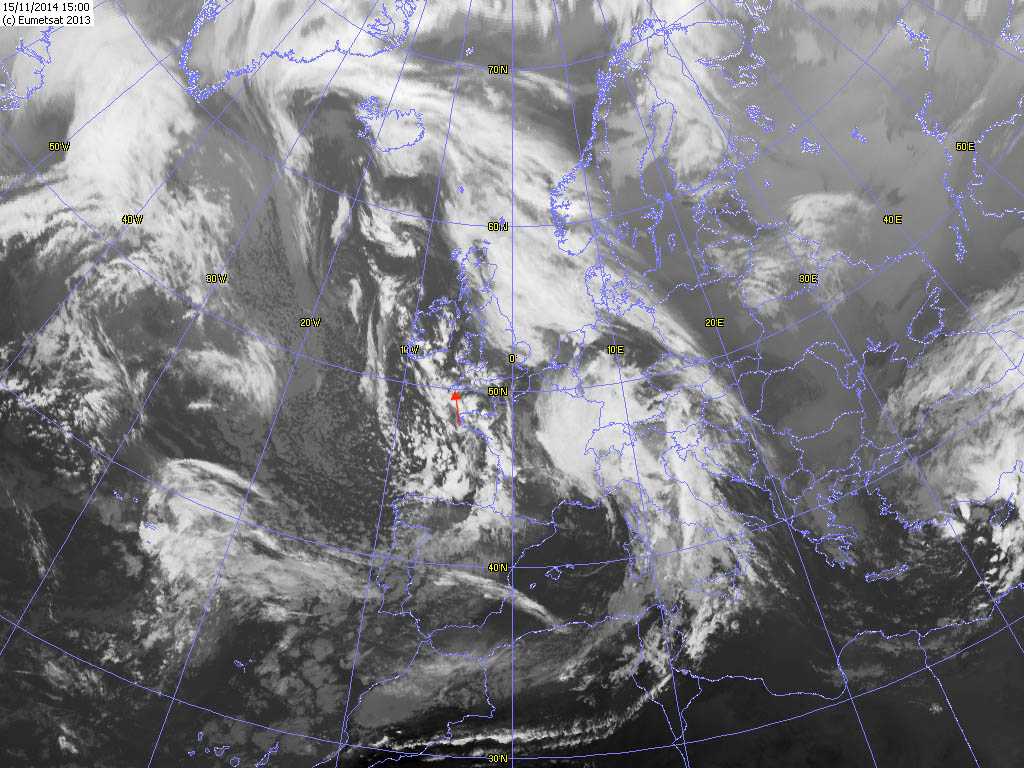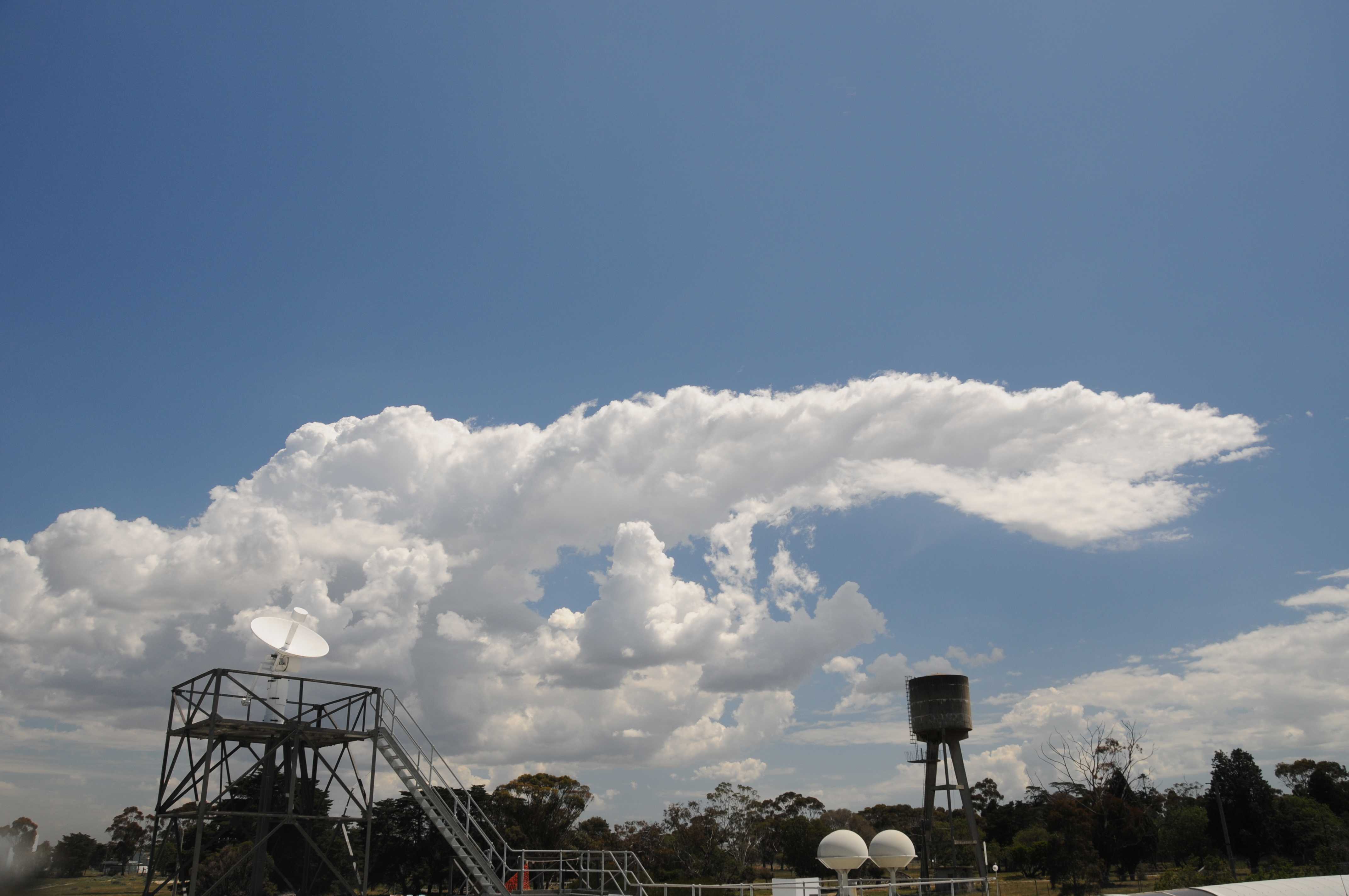© Fiona Heathcote
Praa Sands, Cornwall, United Kingdom of Great Britain and Northern Ireland
Latitude: 50° 9' 33'' N
Longitude: 5° 14' 6'' W
15 November 2014 1432 (Local Time)
Camera direction: towards SSW
Image P/S code: S.4.23
Image I.D.: 5120
CL = 2, CM = 6, CH = /
-

Altocumulus cumulogenitus, Altocumulus stratifomis translucidus duplicatus and Cumulus congestus
This is a complex sky with Altocumulus formed from the spreading of Cumulus; an extensive sheet of thin Altocumulus; and Cumulus of the species congestus, humilis and fractus.
The highest cloud is an extensive sheet of thin Altocumulus (stratiformis translucidus). This cloud may have formed from the spreading of tops Cumulonombus cells that were in the area in the preceding six hours.
Below this sheet are patches of Altocumulus that have formed from the spreading of the tops of Cumulus congestus cells. At 2, the summit of a strongly sprouting congestus cell has reached a stable layer and is starting to spread out. At 3, the summit of a strongly sprouting but narrow congestus cell is moments away from reaching the stable layer. At 4 are the remains of a congestus cell, where its base has dissipated and its top has spread out over a larger area.
Cumulus fractus and humilis are also present.
Links in the image description will highlight features on the image. Mouse over the features for more detail.
© Fiona HeathcotePraa Sands, Cornwall, United Kingdom of Great Britain and Northern IrelandLatitude: 50° 9' 33'' NLongitude: 5° 14' 6'' W15 November 2014 1432 (Local Time)Camera direction: towards SSWCL = 2, CM = 6, CH = /Image P/S code: S.4.23Image I.D.: 5120 Unsettled weather as a series of troughs moved through the area© Crown Copyright
Unsettled weather as a series of troughs moved through the area© Crown Copyright
The sounding from 14 km to the north-east shows an atmosphere that is unstable from the surface to 925 hPa and conditionally unstable from 925 hPa to the tropoause at 291 hPa.
There is also a moisture signal.
© University of Wyoming Convective cells to the north-east of Praa Sands, Cornwall, UK – these developed on a trough that moved through earlier in the day. Bands of middle- and high-level cloud are over and approaching Praa Sands, developing on and ahead of the next trough.© EUMETSAT, 2013
Convective cells to the north-east of Praa Sands, Cornwall, UK – these developed on a trough that moved through earlier in the day. Bands of middle- and high-level cloud are over and approaching Praa Sands, developing on and ahead of the next trough.© EUMETSAT, 2013Altocumulus cumulogenitus and Cumulus congestus
The image shows a Cumulus congestus cell whose vertical development was temporarily inhibited by a small inversion at 5 500 m (18 000 ft), resulting in the top spreading downwind. This feature is identified as Altocumulus cumulogenitus. This feature is not incus as it is not attached to a Cumulonimbus cloud and it does not have the fibrous structure, silky sheen and whiteness of an anvil or of Cirrus spissatus cumulonimbogenitus.
Over the next five minutes, the back edge of the congestus top penetrated marginally above the inversion before the cell started dissipating.
Two Cumulus congestus cells can be seen to the right of the water tower, as can patches of Altocumulus cumulogenitus from earlier Cumulus development.
Cumulus fractus, humilis and mediocris cells are present, as well as a very small patch of Cirrus.
Links in the image description will highlight features on the image. Mouse over the features for more detail.
© Michael BruhnBroadmeadows, Victoria, AustraliaLatitude: 37° 41' 24'' SLongitude: 144° 56' 50'' E29 October 2009 1158 (Local Time)Camera direction: towards WCL = 2, CM = 6, CH = 1Image P/S code: P.4.23Image I.D.: 5953
